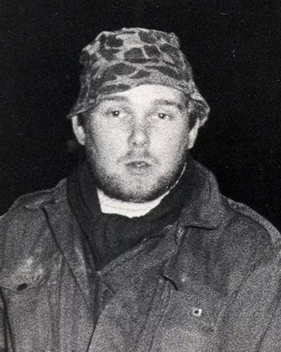On August 19, 1987, the quiet market town of Hungerford in Berkshire, England, was forever marked by one of the darkest chapters in modern British history. The Hungerford Massacre, a shocking spree shooting carried out by a lone gunman, left sixteen people dead (including the perpetrator) and fifteen others injured. The tragedy deeply scarred the community and led to sweeping changes in UK gun laws.
A Day of Tragedy
The perpetrator, Michael Ryan, was a 27-year-old local man with a fascination for firearms. On that summer day, Ryan began his rampage at his home, shooting his mother before setting the house ablaze. He then moved through the town, firing indiscriminately at passersby and neighbours, before finally taking his own life in the local school.
The violence unfolded over several hours, leaving residents and emergency services shocked and overwhelmed. The randomness of the attacks—on people in their homes, on the street, and in their cars—sent waves of fear throughout the nation. Many victims were simply in the wrong place at the wrong time, and the close-knit Hungerford community was left to grieve an unimaginable loss.
Aftermath and National Impact
The horror of the Hungerford Massacre reverberated far beyond the town itself. The national media descended on Hungerford, and the British public was left searching for answers—how could such violence happen in their country?
One of the most profound outcomes of the tragedy was a national conversation about gun control. At the time, Ryan had legally owned several firearms, including semi-automatic rifles, which he used during the attack. In the wake of the massacre, public opinion shifted dramatically in favour of stricter gun regulations.
Changes in Gun Laws
Within a year, the UK government passed the Firearms (Amendment) Act 1988. This legislation imposed severe restrictions on the private ownership of semi-automatic weapons and pump-action shotguns. It also tightened the licensing process for all firearms. The Hungerford Massacre became a defining moment in British legal history, setting the stage for some of the strictest gun laws in the world.
Legacy and Remembrance
Decades later, the pain of August 19, 1987, still lingers in Hungerford. Memorials and annual remembrances honour the victims, while survivors and families continue to seek healing. The massacre is often cited in discussions about public safety and gun legislation, serving as a sombre reminder of the consequences of unchecked access to deadly weapons.
The Hungerford Massacre also united the community in grief and resilience. Residents supported one another through the aftermath, and the collective memory of the tragedy has inspired ongoing efforts to promote peace and safety across the UK.
Conclusion
The Hungerford Massacre stands as a pivotal moment in British history—a day of unimaginable loss that led to national reflection and meaningful change. While the wounds of that day may never fully heal, the legacy of those lost lives endures in safer communities and a country determined to prevent such a tragedy from occurring again.
Discover more from TheHubBuzz.com
Subscribe to get the latest posts sent to your email.

